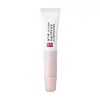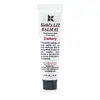What's inside
What's inside
 Key Ingredients
Key Ingredients

 Benefits
Benefits

 Concerns
Concerns

 Ingredients Side-by-side
Ingredients Side-by-side

Hydrogenated Polyisobutene
EmollientMicrocrystalline Wax
Emulsion StabilisingPentaerythrityl Tetraisostearate
EmollientButyrospermum Parkii Butter
Skin ConditioningDextrin Palmitate/Ethylhexanoate
EmulsifyingGlycerin
HumectantPolyethylene
AbrasiveDehydroacetic Acid
PreservativeDimethicone
EmollientDisteardimonium Hectorite
StabilisingButylene Glycol
HumectantSorbitan Isostearate
EmulsifyingCamellia Japonica Seed Oil
EmollientPanax Ginseng Root Water
MaskingAngelica Acutiloba Root Extract
Skin ConditioningOphiopogon Japonicus Root Extract
Skin ConditioningBupleurum Chinense Root Extract
AstringentOzokerite
Emulsion StabilisingHc Red No. 8
CI 77491
Cosmetic ColorantCaprylic/Capric Triglyceride
MaskingTocopherol
AntioxidantTocopheryl Acetate
AntioxidantTriethylhexanoin
MaskingTitanium Dioxide
Cosmetic ColorantPolyglyceryl-2 Diisostearate
EmulsifyingPolyglyceryl-2 Dipolyhydroxystearate
Skin ConditioningPolyglyceryl-2 Triisostearate
EmulsifyingPolyhydroxystearic Acid
EmulsifyingPropylene Carbonate
SolventHydrolyzed Collagen
EmollientParfum
MaskingHydrogenated Polyisobutene, Microcrystalline Wax, Pentaerythrityl Tetraisostearate, Butyrospermum Parkii Butter, Dextrin Palmitate/Ethylhexanoate, Glycerin, Polyethylene, Dehydroacetic Acid, Dimethicone, Disteardimonium Hectorite, Butylene Glycol, Sorbitan Isostearate, Camellia Japonica Seed Oil, Panax Ginseng Root Water, Angelica Acutiloba Root Extract, Ophiopogon Japonicus Root Extract, Bupleurum Chinense Root Extract, Ozokerite, Hc Red No. 8, CI 77491, Caprylic/Capric Triglyceride, Tocopherol, Tocopheryl Acetate, Triethylhexanoin, Titanium Dioxide, Polyglyceryl-2 Diisostearate, Polyglyceryl-2 Dipolyhydroxystearate, Polyglyceryl-2 Triisostearate, Polyhydroxystearic Acid, Propylene Carbonate, Hydrolyzed Collagen, Parfum
Caprylic/Capric Triglyceride
MaskingButyrospermum Parkii Butter
Skin ConditioningPPG-5 Pentaerythrityl Ether
EmollientPEG-5 Pentaerythrityl Ether
EmollientOctyldodecanol
EmollientPentaerythrityl Tetraisostearate
EmollientSqualane
EmollientHydrogenated Vegetable Oil
EmollientSilica Silylate
EmollientGlycine Soja Sterols
EmollientHelianthus Annuus Seed Cera
EmollientPentylene Glycol
Skin ConditioningTocopherol
AntioxidantPentaerythrityl Tetra-Di-T-Butyl Hydroxyhydrocinnamate
AntioxidantCitric Acid
BufferingCaprylic/Capric Triglyceride, Butyrospermum Parkii Butter, PPG-5 Pentaerythrityl Ether, PEG-5 Pentaerythrityl Ether, Octyldodecanol, Pentaerythrityl Tetraisostearate, Squalane, Hydrogenated Vegetable Oil, Silica Silylate, Glycine Soja Sterols, Helianthus Annuus Seed Cera, Pentylene Glycol, Tocopherol, Pentaerythrityl Tetra-Di-T-Butyl Hydroxyhydrocinnamate, Citric Acid
 Reviews
Reviews

Ingredients Explained
These ingredients are found in both products.
Ingredients higher up in an ingredient list are typically present in a larger amount.
This ingredient is also known as shea butter. It is an effective skin hydrator and emollient.
Emollients help soothe and soften your skin. It does this by creating a protective film on your skin. This barrier helps trap moisture and keeps your skin hydrated. Emollients may be effective at treating dry or itchy skin.
Shea butter is rich in antioxidants. Antioxidants help fight free-radicals, or molecules that may harm the body. It is also full of fatty acids including stearic acid and linoleic acid. These acids help replenish the skin and keep skin moisturized.
While Shea Butter has an SPF rating of about 3-4, it is not a sunscreen replacement.
Shea butter may not be fungal acne safe. We recommend speaking with a professional if you have any concerns.
Learn more about Butyrospermum Parkii ButterThis ingredient is an emollient, solvent, and texture enhancer. It is considered a skin-softener by helping the skin prevent moisture loss.
It helps thicken a product's formula and makes it easier to spread by dissolving clumping compounds.
Caprylic Triglyceride is made by combining glycerin with coconut oil, forming a clear liquid.
While there is an assumption Caprylic Triglyceride can clog pores due to it being derived from coconut oil, there is no research supporting this.
Learn more about Caprylic/Capric TriglyceridePentaerythrityl Tetraisostearate is derived from isostearic acid. It is an emollient and emulsifier.
The highest concentration of this ingredient is found in lipsticks.
This ingredient is minimally water soluble and may not be Malassezia folliculitis, or fungal-acne safe.
Learn more about Pentaerythrityl TetraisostearateTocopherol (also known as Vitamin E) is a common antioxidant used to help protect the skin from free-radicals and strengthen the skin barrier. It's also fat soluble - this means our skin is great at absorbing it.
Vitamin E also helps keep your natural skin lipids healthy. Your lipid skin barrier naturally consists of lipids, ceramides, and fatty acids. Vitamin E offers extra protection for your skin’s lipid barrier, keeping your skin healthy and nourished.
Another benefit is a bit of UV protection. Vitamin E helps reduce the damage caused by UVB rays. (It should not replace your sunscreen). Combining it with Vitamin C can decrease sunburned cells and hyperpigmentation after UV exposure.
You might have noticed Vitamin E + C often paired together. This is because it is great at stabilizing Vitamin C. Using the two together helps increase the effectiveness of both ingredients.
There are often claims that Vitamin E can reduce/prevent scarring, but these claims haven't been confirmed by scientific research.
Learn more about Tocopherol